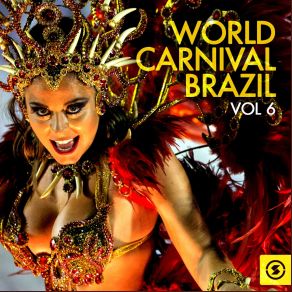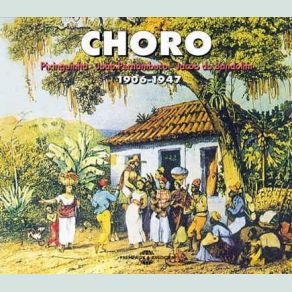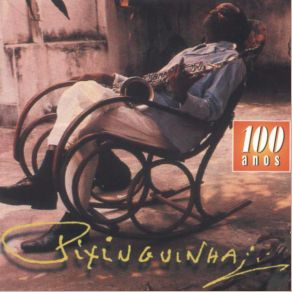Benedito Lacerda
Wikimp3 information about the music of Benedito Lacerda. On our website we have 6 albums and 20 collections of artist Benedito Lacerda. You can find useful information and download songs of this artist. We also know that Benedito Lacerda represents Samba genres.
Biography
[Edit]A great instrumentalist, Benedito Lacerda was also a composer of sambas, choros, and waltzes. A musical group took the title of his Carnival march "Vai Haver o Diabo" (1933) for their name. In the same year, Lacerda won the A Noite newspaper contest with the música junina "Briguei com São João." It was played on virtually all the radio stations of Rio. The first composition of a series written with Jorge Faraj was the waltz "Lela" (1934). Lacerda went to Argentina in 1936, where, together with Francisco Alves and Carmen Miranda, he participated in the Radio El Mundo opening. One of the hits of the Carnival of 1935 was his march "Eva Querida" (with Luís Vassalo), recorded by Mário Reis. Carmen Miranda also had a hit the following year with "Querido Adão" (with Osvaldo Santiago). Orlando Silva scored another hit with "Jardineira" (with Humberto Porto), a song which became a Carnival classic performed extensively to this day. In 1940 Lacerda wrote "Despedida da Mangueira" (with Aldo Cabral), recorded by Francisco Alves, which met with great success in that year's carnival. Lacerda won the year's mayoralty contest of Carnival sambas with Orlando Silva's recording for his march "Lero-Lero" (with Frazão). He won the contest again in 1944 in the categories of samba ("Ninguém Ensaiou," with Haroldo Lobo, recorded by Araci de Almeida) and march ("Verão no Havaí," with Haroldo Lobo, recorded by Francisco Alves). He did it again in 1946 with the marchinha "Espanhola" (with Haroldo Lobo). Francisco Alves had a hit in 1948 with "Falta um Zero no Meu Ordenado," with Ary Barroso, and another in the Carnival of 1950 with "A Lapa" (with Herivelto Martins). He also had success with the march "Acho-te Uma Graça" (with Haroldo Lobo/Carvalhinho), recorded by César de Alencar in 1952. Benedito Lacerda began to learn the flute at age eight, by ear. While still very young, he joined the Banda Aurora. At 17 he moved with his family to Rio, where he started formal flute studies. He graduated from the National Music Institute, in flute and composition. From 1923 to 1925 Lacerda was a member of the band of the military police. In his final year there he was promoted to soloist. Discharged in 1927, he became a professional musician, performing in orchestras and theaters. In 1929 he was a member of the regional (small ensemble) Boêmios da Cidade, which accompanied Josephine Baker. In the early '30s Lacerda formed his own group, Gente do Morro (name provided by Sinhô). As a singer, he recorded seven songs through Brunswick, accompanied by Gente do Morro. The group, which had a strong point in its percussive section, also accompanied other singers in several recording companies, and recorded some instrumental songs as well. Soon it dissolved, giving birth to Regional de Benedito Lacerda. This group had a remarkable career as a soloist group and in the accompaniment of important singers (such as Carmen Miranda, Francisco Alves, Orlando Silva, Sílvio Caldas, and others) and instrumentalists, on the radio, and in recordings (where they appeared many times as Boêmios da Cidade). Around 1940 Lacerda was famous and successful, performing regularly in the sophisticated casinos of Rio. Pixinguinha, who was in a bad phase economically, offered his own choro compositions to Lacerda, who would sign them as partner, in exchange for his excellent promotion work. Among the choros recorded for Victor (where Lacerda was director), there are "Sofres Porque Queres," "Proezas de Sólon," "Só pra Moer," "Canhoto," "Um a Zero," "Descendo a Serra," and others. Playing together with Pixinguinha gave Lacerda the opportunity for the great master to revolutionize Brazilian music through the counterpoints devised by Pixinguinha on the tenor sax (an instrument more appropriate to his style of embouchure, at the time). In 1950, Benedito Lacerda retired and the group was then led by Canhoto, as Regional do Canhoto.
Title: Benedito Lacerda e Pixinguinha
Artist: Pixinguinha, Benedito Lacerda
Genre: World Music, Latin
Collections
Title: Marchinhas de Carnaval Vol 7
Genre: Latin
Title: World Carnival Brazil, Vol. 6
Genre: Latin
Title: Marchinhas de Carnaval Vol 5
Genre: Latin
Title: Marchinhas de Carnaval Vol 1
Genre: Latin
Title: Marchinhas de Carnaval Vol 6
Genre: Latin
Title: Marchinhas de Carnaval, Vol. 3
Genre: Latin
Title: Marchinhas de Carnaval Vol 8
Genre: Latin
Title: World Carnival Brazil, Vol. 1
Genre: Jazz, Crossover Jazz
Title: Choro e Samba Frevo do Brasil, Vol. 2
Genre: Latin
Title: Marchinhas de Carnaval Vol 2
Genre: Latin
Title: World Carnival Brazil, Vol. 3
Genre: Latin
Title: Pure... Brazil
Genre: World Music, Latin
Title: Choro 1906-1947 (CD1)
Genre: World Music
Title: Choro 1906-1947 (CD2)
Genre: World Music
Title: Pure... Brazil 1939 (CD3)
Featuring albums
Title: Nova História Da MPB Pixinguinha / Nova Historia Da MPB Pixinguinha
Artist: Pixinguinha
Genre: Pop
Title: Armando Marçal & Bide (1933 - 1939) / Armando Marcal & Bide (1933 - 1939)
Artist: Various Artists
Genre: Latin
































